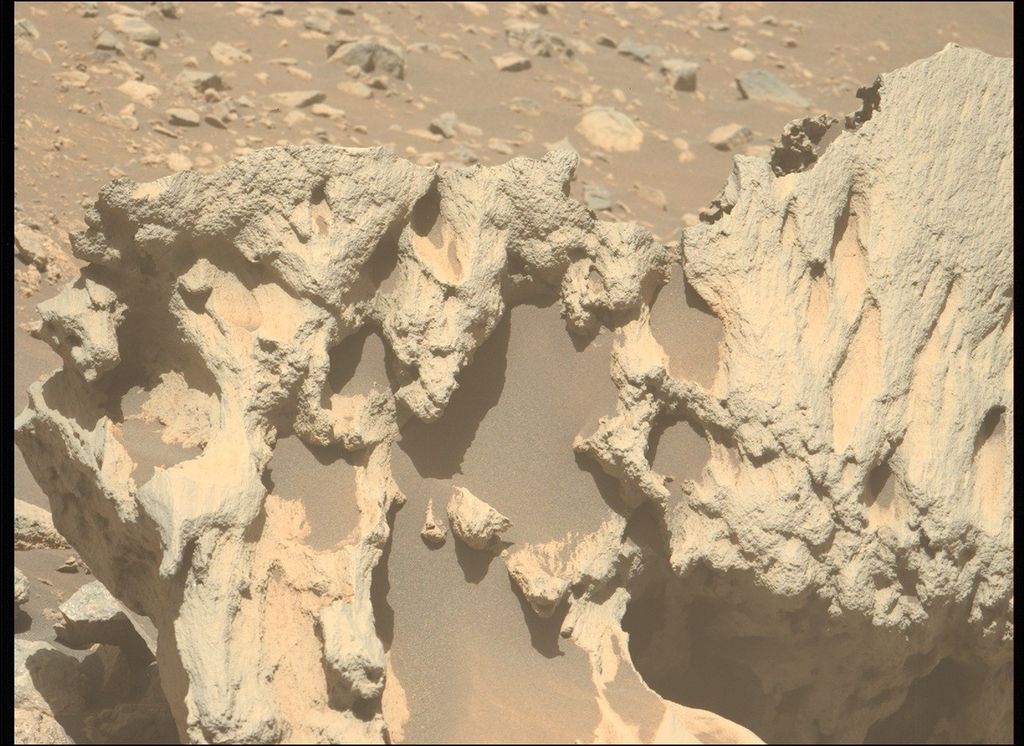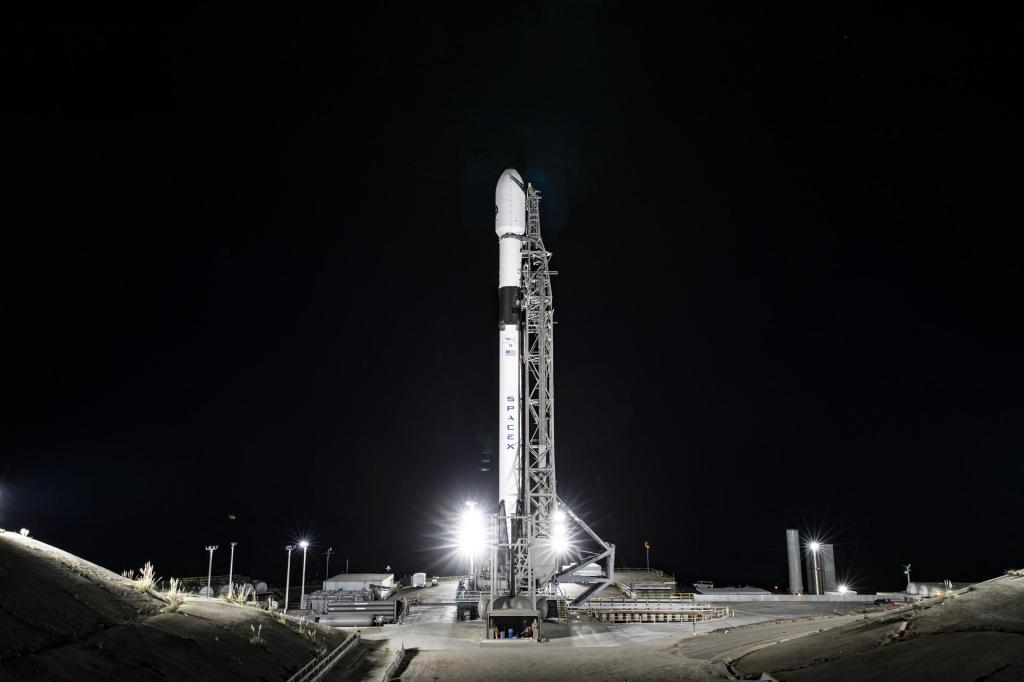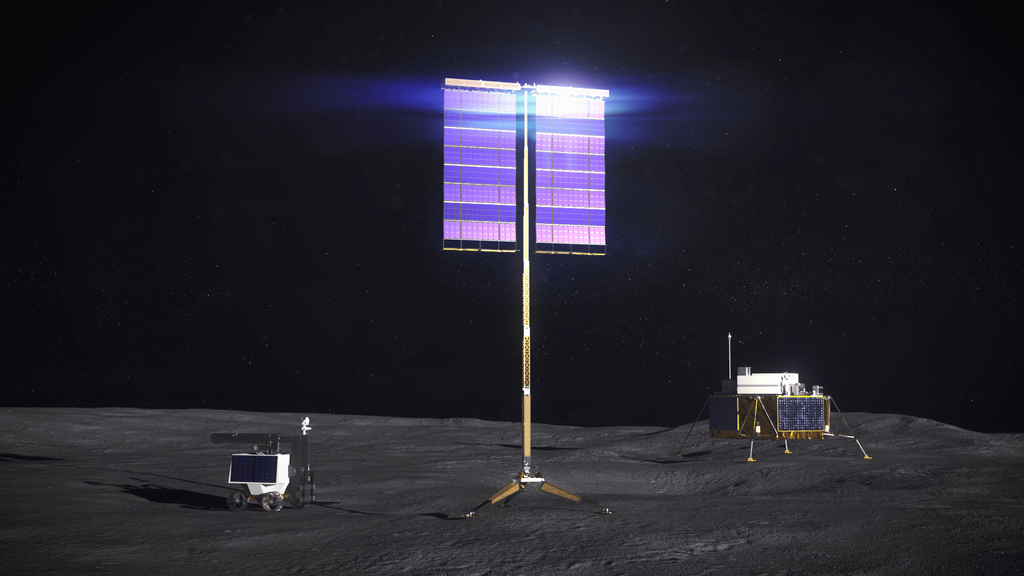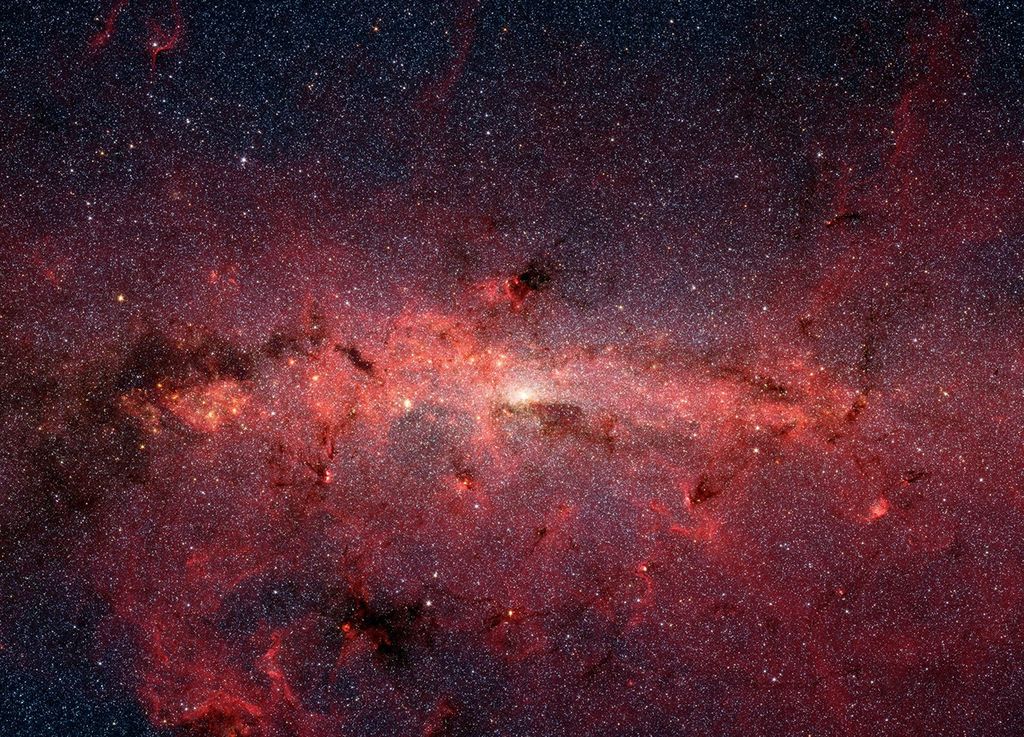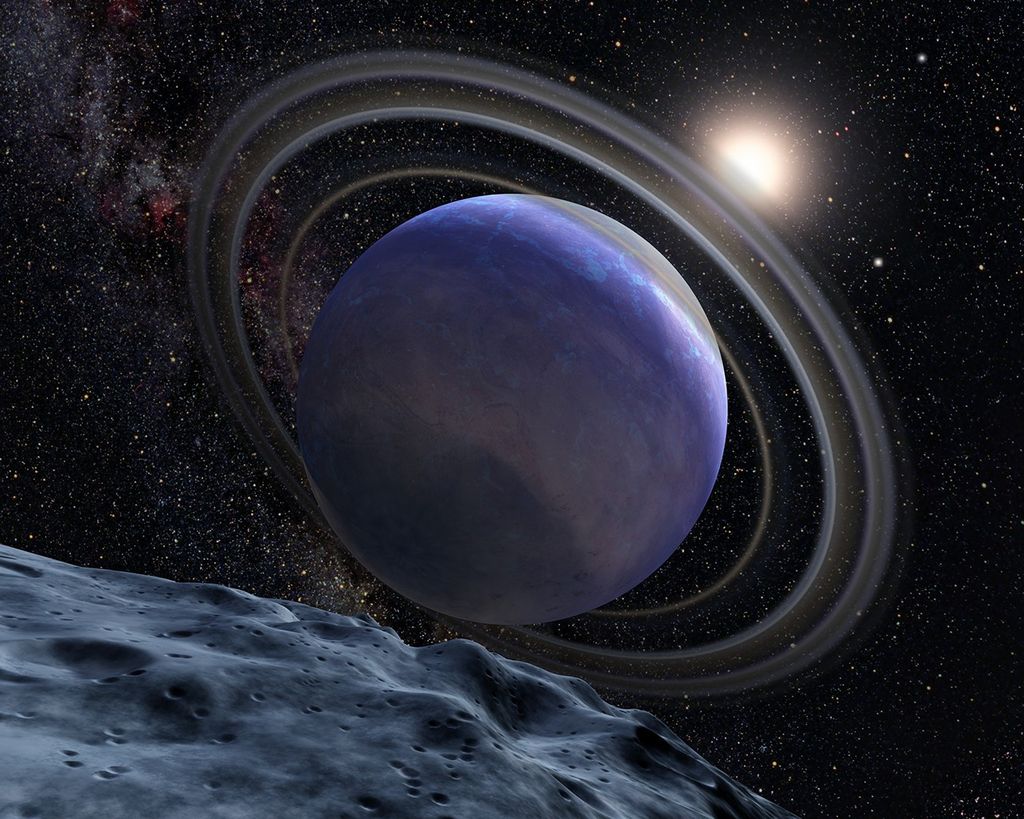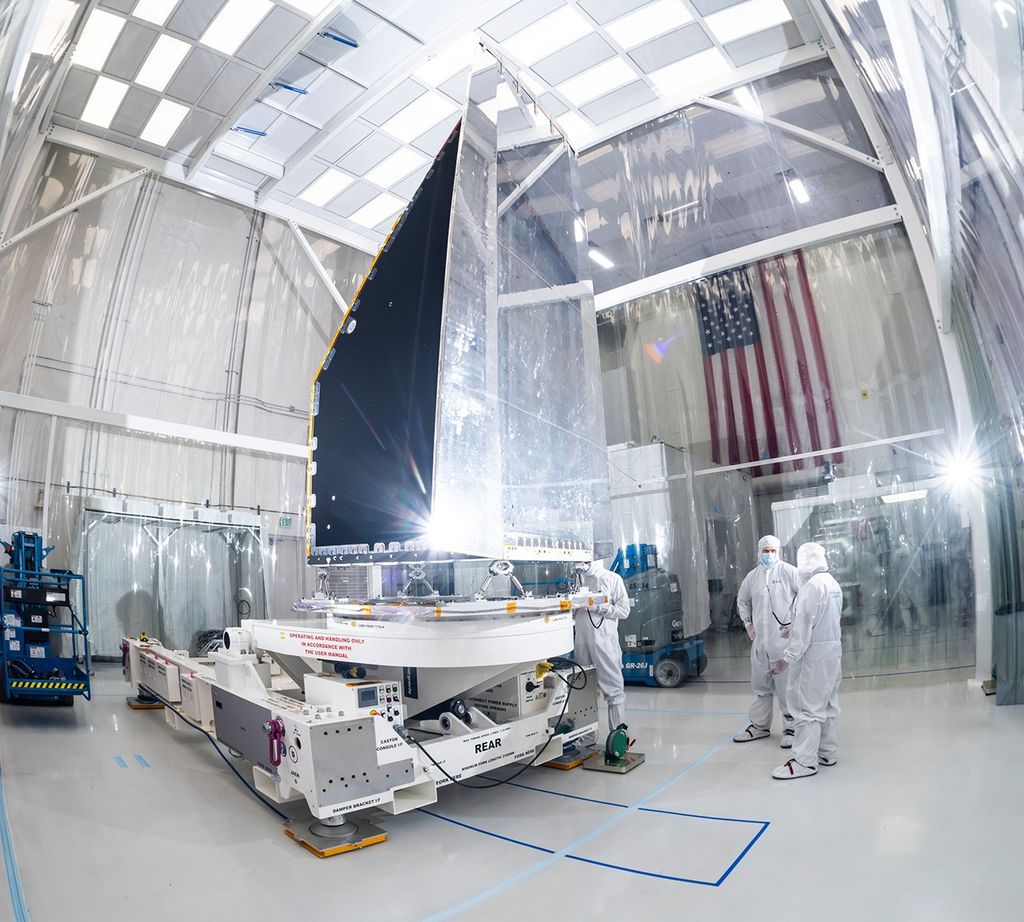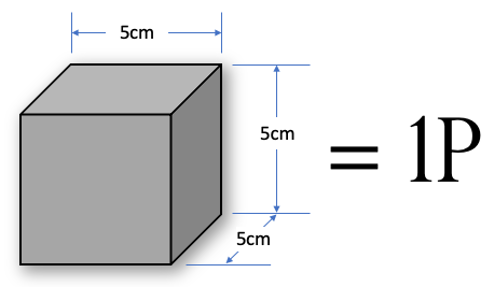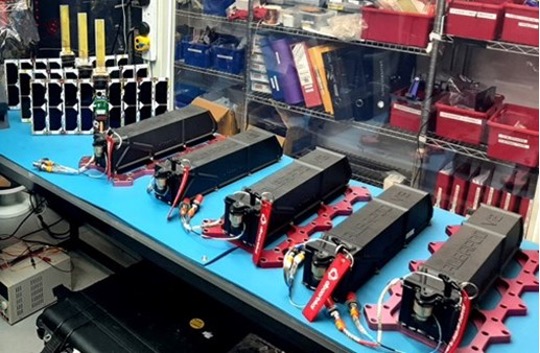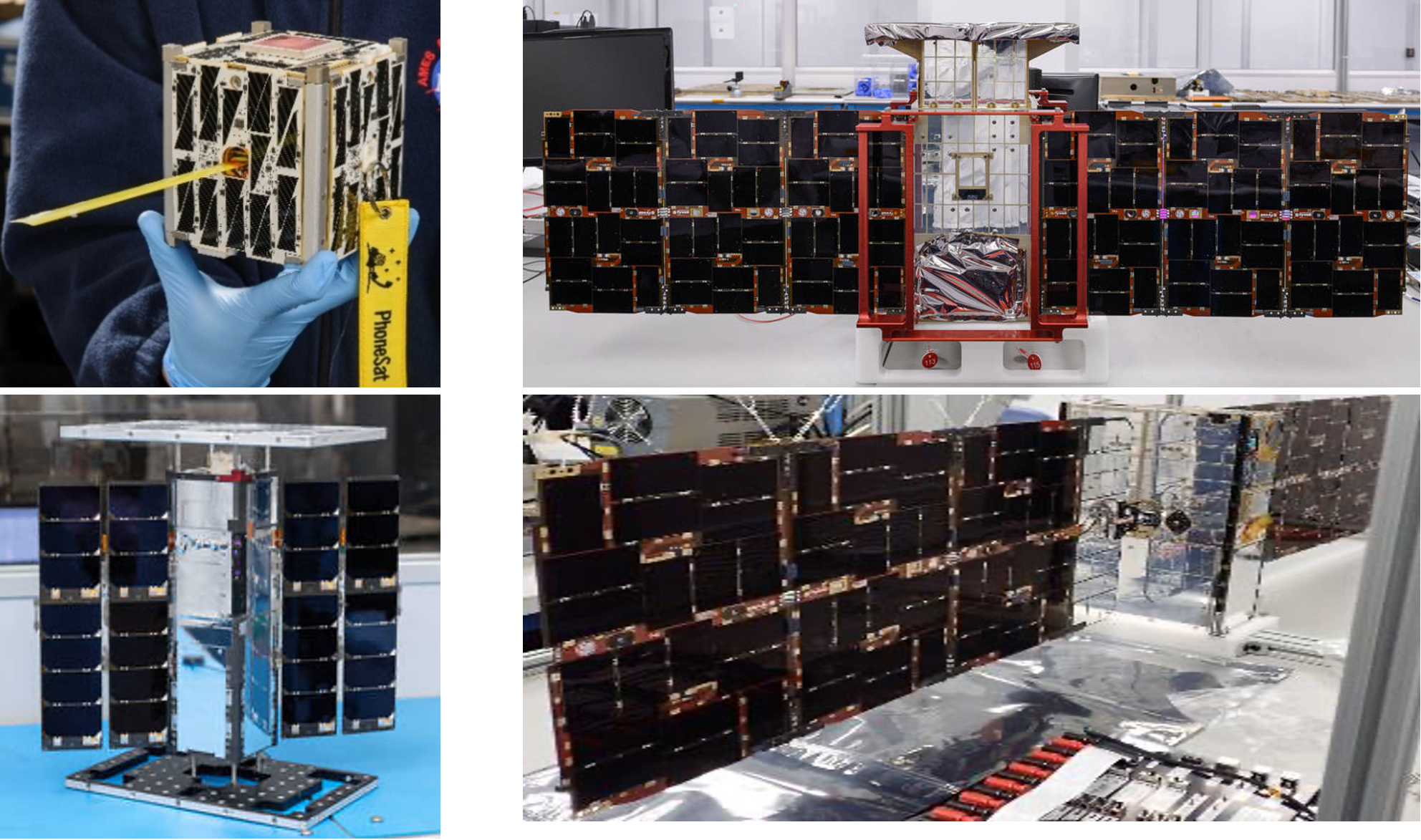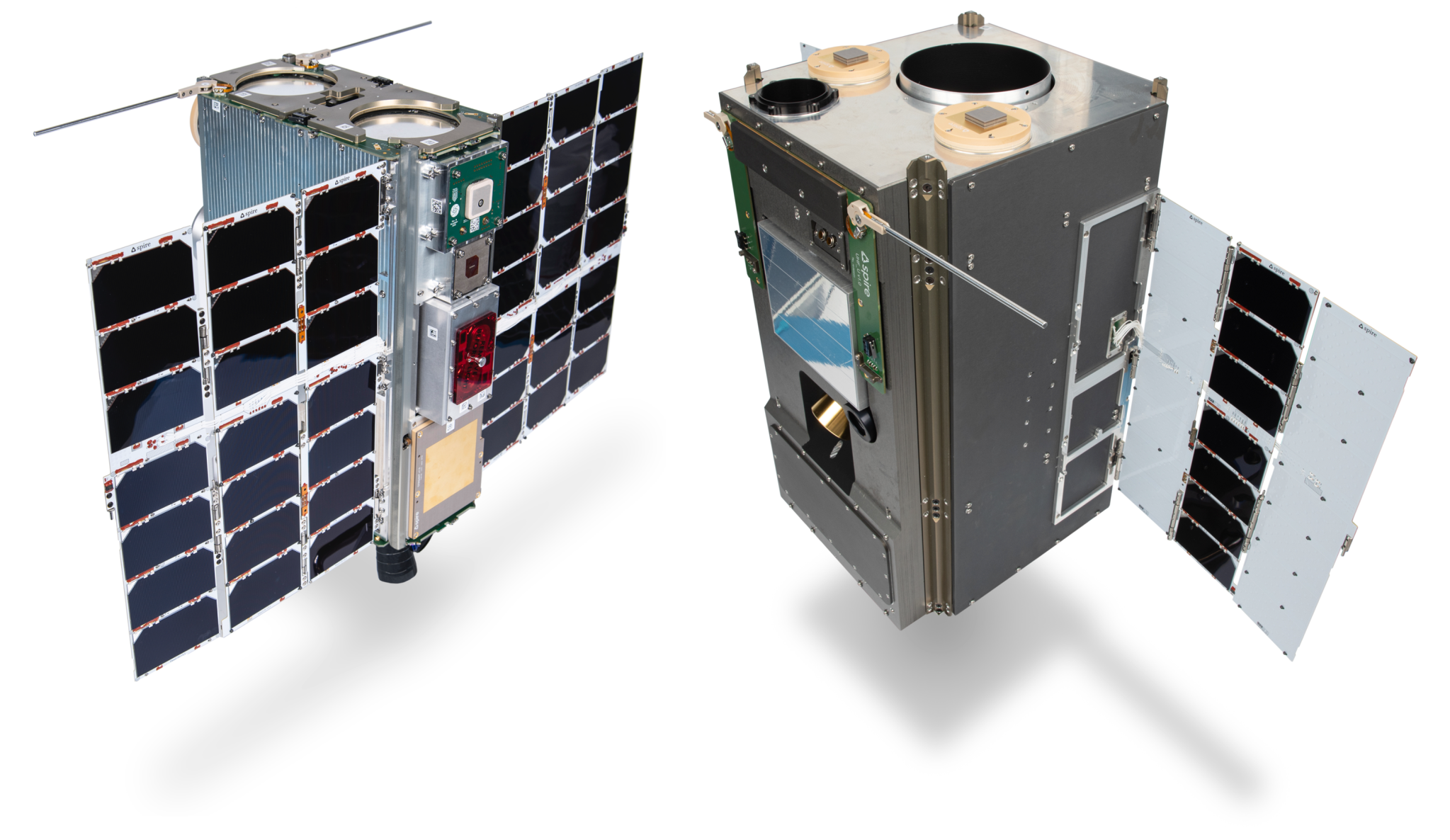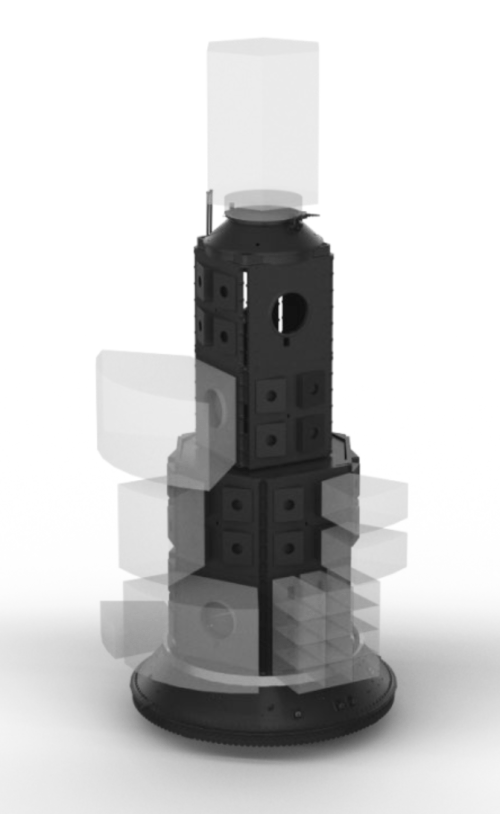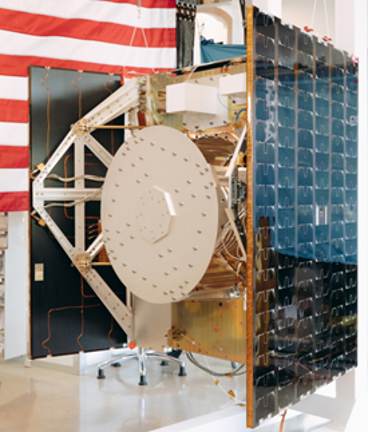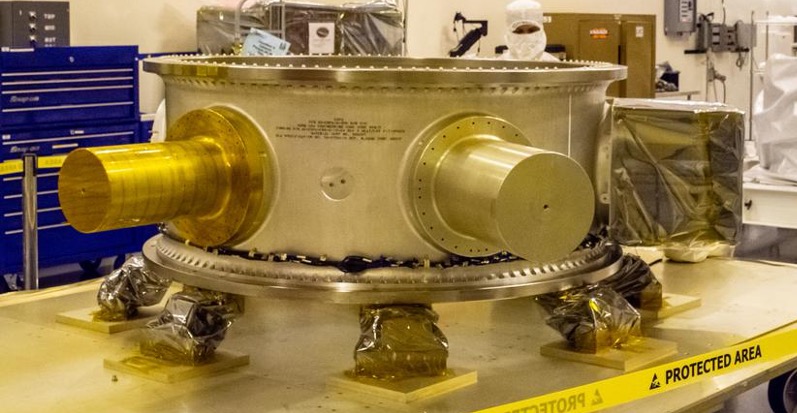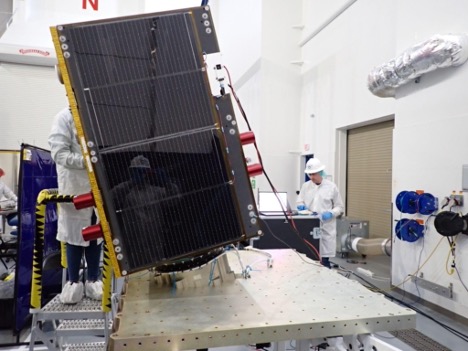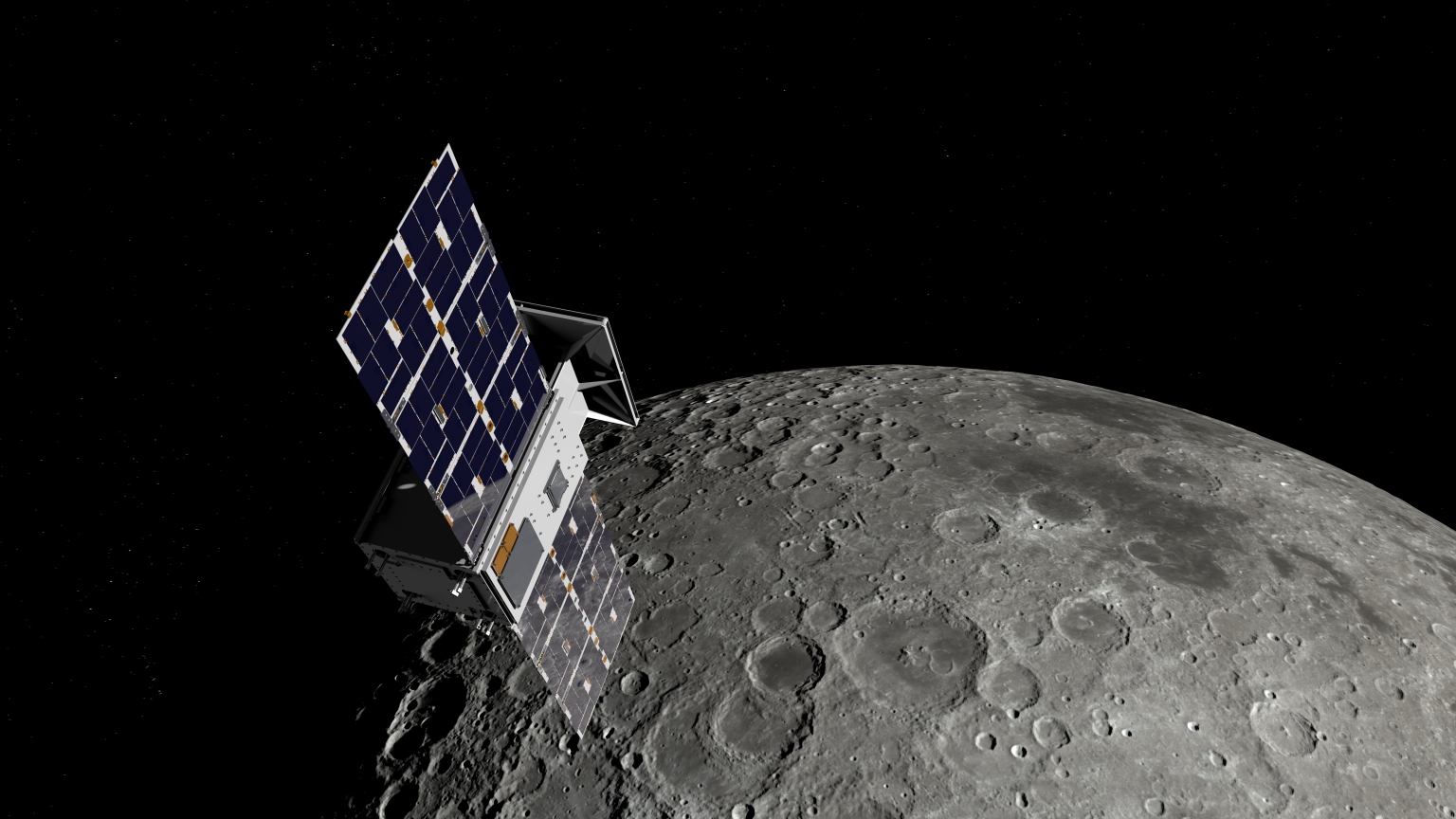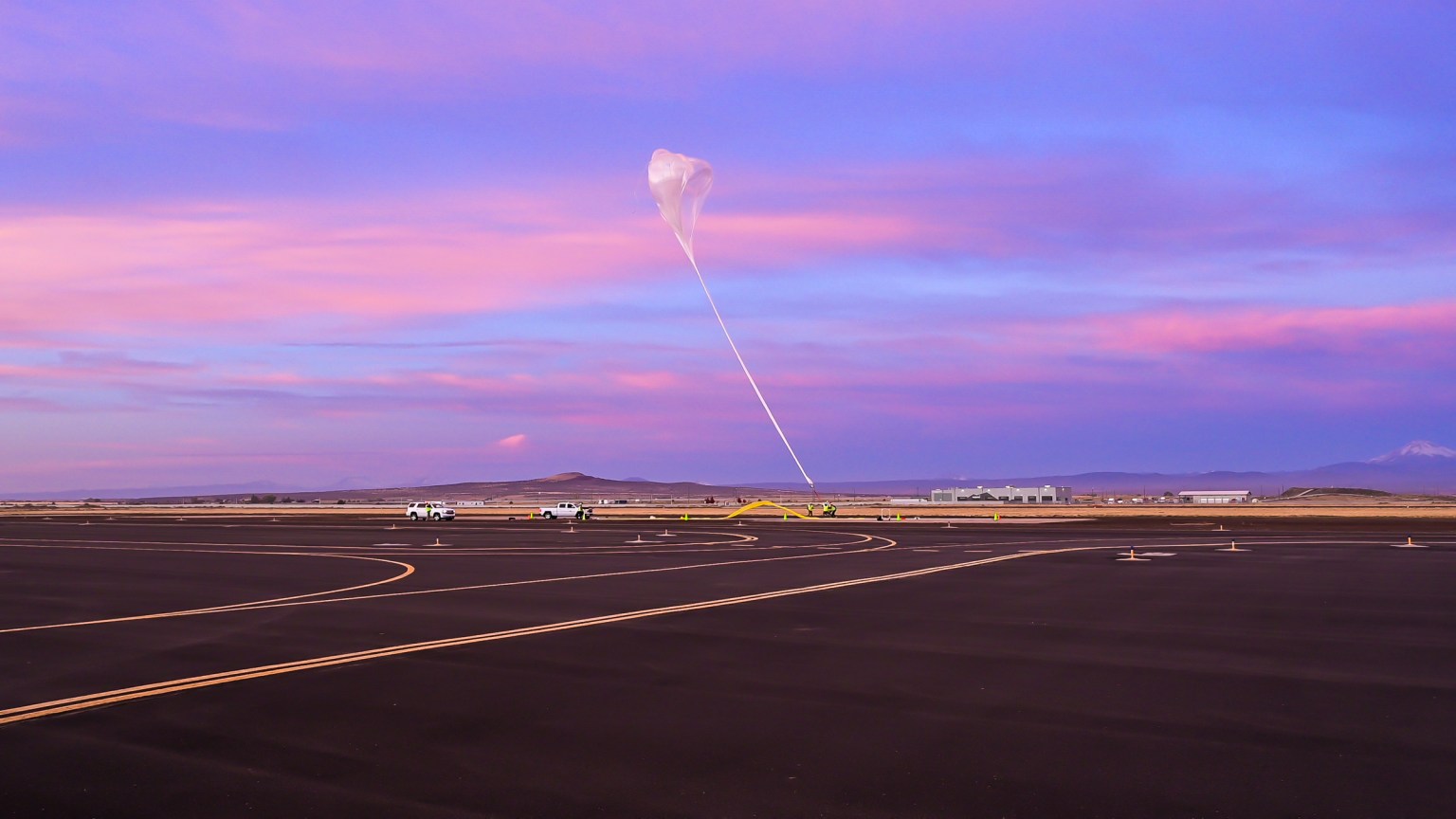Chapter Contents
- Chapter Glossary
- 2.1 Introduction
- 2.2 State-of-the-Art – Spacecraft Platforms
- 2.3 Programmatic and Systems Engineering Considerations
- 2.4 Summary
- References
Chapter Glossary
| (COTS) | Commercial-off-the-Shelf |
| (EELV) | Evolved Expendable Launch Vehicle |
| (ESPA) | EELV Secondary Payload Adapter |
| (GEO) | Geostationary Equatorial Orbit |
| (I&T) | Integration and Test |
| (kg) | Kilogram |
| (LEO) | Low Earth Orbit |
| (MEO) | Medium Earth Orbit |
| (MTBF) | Mean Time Between Failures |
| (NASA) | National Aeronautics and Space Administration |
| (SHF) | Super High Frequency |
| (SmallSat) | Small Satellite |
| (SPA) | Secondary Payload Adapter |
| (STMD) | Space Technology Mission Directorate |
| (TRL) | Technology Readiness Level |
| (UHF) | Ultra High Frequency |
| (UK) | United Kingdom |
| (Unk) | Unknown |
| (USA) | United States of America |
| (VLEO) | Very Low Earth Orbit |
| (VHF) | Very High Frequency |
| (W) | Watts |
| (xGEO) | Beyond Geostationary Equatorial Orbit |
2.1 Introduction
The Small Spacecraft market allows a wide range of market utilization for mission implementations, from ground-up developments of a spacecraft to entire hosted orbital solutions. This chapter addresses the state of the art for complete spacecraft platforms in two distinct SmallSat market options.
- Hosted orbital services: an emerging business model in the space industry that offers customers access to satellite capabilities to host their payloads (also known as hosted orbital payloads) without the need to build, launch, or operate their own spacecraft. With hosted orbital missions, a payload is typically delivered to the provider to be integrated onto an existing spacecraft.
- Spacecraft bus: also known as a satellite bus or spacecraft platform, is the section of the flight segment that provides essential services to the payload and enables the mission objectives such as thermal management, power, communication, guidance, navigation and control, data processing, and propulsion. This option allows the user to purchase a spacecraft bus with optional system-level integration and test (I&T) services, but vendors may not offer hosted orbital services (spacecraft bus + system-level I&T + operations).
One option is not superior and selection may depend on the needs and constraints of each individual mission. The list of organizations/companies in this chapter is not all-encompassing and does not constitute an endorsement from NASA. The information is for awareness and guidance only. The performance advertised may differ from actual performance since the information has not been independently verified by NASA subject matter experts and relies on information provided directly from the manufacturers or available public information. Table 2-9 includes a list of providers with contact information and the source used to complete the tables. It is recommended to contact the organizations/companies directly for further clarification and applications for your specific mission needs.
This chapter organizes the state-of-the-art small spacecraft platforms into these two main categories. The dedicated small spacecraft bus section is further divided by PocketQube, CubeSat, and ESPA-Class offerings. Each subsection contains a summary table with a non-exhaustive list of commercially available small spacecraft platforms.
- 2.2.1 Hosted Orbital Services
- 2.2.2. Spacecraft Bus
- PocketQubes
- CubeSats
- ESPA-Class
Section 2.3 provides a brief explanation on systems engineering considerations that introduces newcomers to the design selection process and highlights specific resources for mission development.
2.2 State-of-the-Art – Spacecraft Platforms
2.2.1 Hosted Orbital Services
Hosted orbital service providers accept your science instruments and/or technology payloads and performs system-level integration and test, and operations. The actual implementation on the vendor side varies widely across the industry, depending on providers’ vehicle type and business model. Examples of vendor implementations may include the following.
- Host your payload on its own dedicated spacecraft where the entirety of the spacecraft bus is at the disposal of a single customer and/or mission
- Host your payload on vendor’s unused capability aboard their own, internally developed mission
- Host your payload along with other payloads from different customers on a single spacecraft
- Host your ‘software-only’ payload, also known as a ‘virtual’ payload on an existing spacecraft that supports virtual payloads
It should be noted that not all hosted orbital service providers sell their spacecraft bus to customers. For spacecraft bus providers, see Section 2.2.2. It is incumbent upon the user to conduct their own research and determine which solution best meets their mission requirements and constraints.
Common benefits of hosted orbital solutions include cost effectiveness, reliability, flexibility, faster access to space, and the ability for users to focus on the spacecraft payload. Customers can access space capabilities without the high upfront costs of building and launching their own spacecraft and can concentrate their efforts and resources on their specific instruments or technologies, leaving the spacecraft bus build, system-level integration and test, and operations to an experienced developer. Hosting of multiple payloads offers efficiencies through resource sharing, which can make this option more affordable than manifesting a payload on its own dedicated spacecraft. Common interfaces allow for rapid integration and test, decreasing the overall time to flight. Mission success can be improved by leveraging commercial provider’s proven infrastructure, processes and expertise. Services can be scaled up or down based on mission needs, allowing for adjustments in bandwidth, coverage, or mission duration. Additional space-based hosting of small spacecraft payloads is also available on several vehicles that are not covered in this report, including payloads that are hosted in or on the ISS, attached to rocket bodies, or hosted in or on capsules (crewed or uncrewed) that return to earth.
Procurement of hosted orbital services is relatively new and could be challenging if the user does not have experience procuring such services. In 2023, NASA’s Flight Opportunities program released a solicitation for Suborbital/Hosted Orbital Flight and Payload Integration Services that, for the first time, included commercial orbital platforms capable of hosting payloads. Fifteen companies were selected to provide flight and payload integration services for technology payloads to be demonstrated in high-altitude, reduced gravity, and other relevant testing environments on suborbital rocket-powered vehicles, high-altitude balloons, and hosted orbital platforms via Indefinite Delivery/Indefinite Quantity (IDIQ)contracts. These IDIQ contracts can be used by NASA centers and other government agencies to procure hosted orbital services. The Flight Opportunities competitions and solicitations (e.g., TechLeap, TechFlights) offer options for hosted orbital platforms, aiming to advance the maturity of a technology via flight tests. Additional information on NASA’s Flight Opportunities program and the IDIQ contract for hosted orbital services can be found here: https://www.nasa.gov/stmd-flight-opportunities/nasa-contracted-flight-providers/.
| Table 2-1: Hosted Orbital Service Providers (The fields indicate maximum capability; organizations may offer multiple options including smaller capabilities within the Hosted Payloads category) | ||||||
| Organization Headquarters | Max Volume | Max Mass (kg) | Peak Power (W) | 3-σ Pointing Control/ Knowledge | Destination | US Office |
| Aerospacelab Belgium | 0.125 m3 | 50 | 300 | <0.005°/ <0.005° | LEO, GEO | Yes |
| Artemis Space Technologies UK | 0.58 m3 | 500 | 1,500 | 0.01°/0.01° | LEO, MEO, GEO, Lunar and Deep Space | No |
| Astranis Space Technologies Corp. USA | 0.02 m3 | 10 | 300 | <0.1°/ <0.09° | GEO | Yes |
| Astro Digital USA | Unk | Unk | Unk | Unk | Unk | Yes |
| Axelspace Japan | 0.2 m3 | 30 | 184 | <0.05°/ <0.04° | LEO | No |
| Berlin Space Technologies Germany | 1 m3 | 250 | 2,500 | <0.017°/< 0.017° | LEO | Yes |
| C3S Electronics Development Hungary | 16.5U | 18.5 | 155 | 0.2°/ 0.2° | LEO, MEO | No |
| CREOTECH Poland | >50U | 100 | 175 | <0.015°/< 0.015° | LEO, MEO, GEO, Lunar | No |
| EnduroSat Bulgaria | 150U | 70 | 300 | 0.1°/ 0.008° | LEO | Yes |
| General Atomics EMS USA | 0.46 m3 | 200 | 450 | 0.03°/ 0.02° | LEO | Yes |
| German Orbital Systems Germany | 4U | 8 | 50 | <1°/< 1° | LEO | No |
| Gran Systems Taiwan | 6U | 12 | 50 | 2°/ 2° | LEO, Lunar | Yes |
| Harpy Aerospace India | 6U | 28 | 72 | <0.1°/< 0.01° | LEO, GEO, Lunar, ISS | Yes |
| Hemeria France | 0.1 m3 | 35 | 250 | <0.03°/<0.01° | LEO, GTO, GEO | No |
| Innova Space Argentina | 0.5U | 0.5 | 4 | <15°/< 15° | LEO | Yes |
| Loft Orbital USA | 0.44 m3 | 85 | >1,000 | <0.035°/<0.03° | LEO | Yes |
| Momentus Space USA | 1 m3 | 800 | 3,000 | 0.008°/ 0.008° | LEO, MEO, GEO, Lunar, Deep Space | Yes |
| NanoAvionics Lithuania | 0.7 m3 | 150 | 378 | 0.15°/ 0.03° | LEO | Yes |
| Nara Space South Korea | 16U | 19 | 120 | 0.05°/ 0.03° | LEO | No |
| NearSpace Launch USA | 8U | 16 | 160 | 0.5°/ 0.2° | LEO | Yes |
| Northrop Grumman USA | 0.37 m3 | 50 | 420 | <4°/<1° | LEO | Yes |
| NovaWurks USA | 1 m3 | 300 | 2000 | 0.002°/0.0004° | LEO, GEO, xGEO | Yes |
| NPC SPACEMIND Italy | 12U | 24 | 100 | <0.1°/<0.1° | LEO, MEO | No |
| OHB LuxSpace Luxembourg | 0.3 m3 | 90 | 600 | <0.022°/ 0.01° | LEO | No |
| OHB Sweden Sweden | 1 m3 | 300 | 1,500 | 0.008°/ 0.008° | LEO, MEO | No |
| Open Cosmos UK | 12U | 18 | 160 | 0.03°/0.02° | LEO | No |
| Orbital Astronautics UK | 0.163 m3 | 100 | 5,000 | <0.05°/<0.01° | LEO, MEO, GEO, Deep Space | No |
| Orion Space Solutions USA | 14U | 45 | 400 | <1°/<1° | LEO, GEO, Lunar | Yes |
| Quantum Space USA | 0.5 m3 | 100 | 400 | 0.006°/0.006° | LEO, GEO, Cislunar, Lunar, Deep Space | Yes |
| Redwire Space USA | 0.94 m3 | 104 | 500 | 0.005°/0.0017° | LEO, MEO, GEO and Deep Space | Yes |
| Rocket Lab USA | Unk | Unk | Unk | Unk | LEO | Yes |
| SatRev Poland | 3U | 3 | 25 | 1°/0.6° | LEO | No |
| Sierra Space USA | 0.48 m3 | 250 | 500 | 0.001°/ <0.001° | LEO, MEO, GEO | Yes |
| SITAEL Italy | 0.90 m3 | 120 | 2,000 | 0.0017°/ 0.001° | LEO | No |
| SpaceX USA | Unk | Unk | Unk | Unk | LEO | Yes |
| Space Inventor Denmark | 24U | 50 | 400 | <0.008°/ <0.008° | LEO, GEO, MEO | No |
| Spacemanic Czech Republic | 12U | 18 | 500 | 0.1°/ 0.05° | LEO, MEO, GEO, Lunar | No |
| Spire Global USA | 12U | 32 | 300 | 0.1°/ 0.05° | LEO | Yes |
| Surrey Satellite Technology Ltd. UK | 0.4m3 | 200 | 2,000 | <0.01°/ <0.01° | LEO, MEO, GEO, Lunar | No |
| Terran Orbital USA | 12U | 100 | 500 | 0.014°/ 0.002° | LEO, GEO, Deep Space | Yes |
| Varda Space Industries USA | Unk | Unk | Unk | Unk | Unk | Yes |
| Xplore USA | 0.125 m3 | 55 | 210 | 0.17°/ 0.018° | VLEO, LEO, Cislunar | Yes |
| York Space Systems USA | – | 300 | 1,500 | 0.008°/ 0.004° | LEO, GEO, Lunar | Yes |
2.2.2 Dedicated Spacecraft Bus
The SmallSat market offers complete spacecraft bus solutions including system-level I&T and operations options. Spacecraft bus providers in this section may only offer the spacecraft bus as a product or may also provide I&T and operations services. Contact the provider using the Table 2-9 to better understand the services offered if a provider seem to meet your basic requirements advertised in the tables.
PocketQubes
PocketQubes refer to small satellites that conform to a form factor of 5 cm cubes. PocketQubes use a standard deployer and follow a unit nomenclature of P. In this case 1P refers to a single 5 cm cube (see Figure 2.3). Consequently, 2P refers to two of these single units. A typical PocketQube deployer can deploy up to a 3P satellite but larger deployers may allow additional capability. PocketQube providers have developed spacecraft buses to simplify mission implementation; a list of providers is included in this section. Table 2-2 provides available commercial PocketQube products. Figure 2.4 is an example of a PocketQube deployer at Alba Orbital.
| Table 2-2: PocketQubes Market Solutions (The fields indicate maximum capability; organizations may offer multiple options including smaller capabilities within the PocketQube category) | ||||||
| Organization Headquarters | Peak Power (W) | 3-σ Pointing Control/ Knowledge | Comm Options | Intended Destination | Maturity | US Office |
| Alba Orbital UK | 15 | 5°/2° | UHF, S | LEO | Flown LEO | Yes |
| DIYSATELLITE Argentina | 9 | <5°/<5° | VHF, UHF, SHF | LEO, GEO, Lunar | Flown LEO | No |
| FOSSA Systems Spain | 10 | <5°/<5° | UHF, S | LEO | Flown LEO | No |
| Hydra Space Systems Spain | 8 | 5°/5° | VHF, UHF | LEO | Flown LEO | No |
| Innova Space Argentina | 3.9 | N/A -Magnetic Passive | UHF | LEO | Flown LEO | Yes |
| Quub, Inc. USA | 26 | 5°/2° | UHF, S | LEO, Lunar | Flown LEO | Yes |
CubeSats
CubeSats refer to small satellites that conform to a form factor of 10 cm cubes. The CubeSat standard was created by California Polytechnic State University, San Luis Obispo, and Stanford University’s Space Systems Development Lab in 1999 to facilitate access to space for university students. Low-cost access to space increased due to the adoption of the standard by launch providers. Many organizations are currently using the standard including academia, private industry, and government. More information on the history of CubeSats can be found in the introduction of this report. CubeSat providers have developed spacecraft buses to accommodate missions from <1U to 27U satellites. This section provides a list of providers separated by satellite size: 0.25U-3U (Table 2-3), 6U (Table 2-4), 12U (Table 2-5) and 16U+ (Table 2-6).
Multiple companies have developed deployers for CubeSats with different dimensions and external volume allocations. Contact your sponsoring organization and/or launch provider for specifics on which deployer to use in your mission. The primary two interfaces follow the classic corner rails or the tabs (clamped and unclamped). Most spacecraft bus providers in this chapter can adapt to different interfaces. Refer to the Launch, Integration, and Deployment chapter for further information on SmallSat deployers. Figure 2.5 includes images of CubeSat missions that have been successfully flown in space, Figure 2.6 provides examples of CubeSat deployers’ locations on a rocket, and Figure 2.7 provides examples for 6U and 16U satellites from Spire Global.
| Table 2-3: 0.25U-3U Market Solutions (The fields indicate maximum capability; organizations may offer multiple options including smaller capabilities within the 0.25U-3U category) | ||||||
| Organization Headquarters | Peak Power (W) | 3-σ Pointing Control/ Knowledge | Comm Options | Intended Destination | Maturity | US Office |
| AAC Clyde Space Sweden | 90 | <0.1°/<0.01° | VHF, UHF, S, X | LEO | Flown LEO | Yes |
| Alén Space Spain | 180 | 0.2°/0.1° | VHF, UHF, S | LEO | Flown LEO | No |
| Artemis Space Technologies UK | 50 | 0.01°/0.01° | UHF, S, X, Ka, Ku | LEO | Flown LEO | No |
| Blue Canyon Technologies USA | 27 | 0.003°/0.003° | L, S, X | LEO, GEO, Deep Space | Flown LEO Qualified GEO and Deep Space | Yes |
| C3S Electronics Development Hungary | 35 | 0.2°/0.2° | UHF, S | LEO, MEO | Flown LEO | No |
| Deimos Space Spain | 35 | 0.2°/0.2° | UHF, X | LEO | Flown LEO | No |
| EnduroSat Bulgaria | 84 | <1°/<0.6° | UHF, S, X | LEO | Flown LEO | Yes |
| FOSSA Systems Spain | 30 | 1°/1° | UHF, S | LEO | Flown LEO | No |
| General Atomics EMS USA | 10 | 0.28°/0.08° | UHF | LEO, MEO, GEO, xGEO | Under Development | Yes |
| German Orbital Systems Germany | 24 | <1°/<1° | UHF, S | LEO | Flown LEO | No |
| GomSpace Denmark | 35 | 2.5°/2° | S | LEO | Flown LEO | Yes |
| Gran Systems Taiwan | 50 | 2°/ 2° | VHF, UHF | LEO | Flown LEO | Yes |
| GUMUSH AeroSpace Turkey | 80 | <1°/ <0.1° | VHF, UHF, S, X | LEO | Flown LEO | No |
| Harpy Aerospace India | 72 | <0.1°/<0.01° | VHF, UHF, S, X | LEO, GEO, Lunar | Qualified LEO and Lunar | Yes |
| Hex20 Australia | 25 | 0.003°/ 0.003° | UHF, S | LEO, MEO, GEO, Lunar | Flown LEO | No |
| IMT Italy | >5 | 10°/5° | VHF, UHF | LEO | Under Development | No |
| Innova Space Argentina | 7.5 | <15°/<15° | UHF | LEO | Flown LEO | Yes |
| ISISPACE The Netherlands | 50 | <15°/<15° | VHF, UHF, S | LEO | Flown LEO | No |
| NanoAvionics Lithuania | 175 | 13.20°/12.93° | UHF, S, X | LEO | Flown LEO | Yes |
| NearSpace Launch USA | 100 | 0.5°/0.2° | L, UHF, S, X | VLEO, LEO | Flown LEO | Yes |
| NPC SPACEMIND Italy | 51.6 | <0.1°/<0.1° | UHF, S, X, Ka | LEO, MEO, GEO, Lunar | Flown LEO and MEO | No |
| Open Cosmos UK | 160 | 2.4°/0.67° | UHF, S | LEO | Flown LEO | No |
| Orbital Astronautics UK | 400 | 0.1°/ 0.01° | S, X, K, Ka, Optical | LEO, MEO | Flown LEO | No |
| Orion Space Solutions USA | 8 | 1°/1° | L, S, X | LEO | Qualified LEO | Yes |
| Pumpkin Space Systems USA | 200 | 0.05°/<0.05° | UHF, S, X, Ka | LEO | Flown LEO | Yes |
| Quub, Inc. USA | 44 | 5°/2° | UHF, S | LEO, Lunar | Flown LEO | Yes |
| SatRev Poland | 36 | 1°/0.6° | UHF, S | LEO | Flown LEO | No |
| SkyLabs Slovenia | 100 | 0.3°/0.06° | VHF, UHF, S | LEO, MEO | Flown LEO and MEO | No |
| Space Flight Laboratory Canada | 93 | 0.009°/0.004° | UHF, S, X, Ka | LEO, GEO, Lunar | Flown LEO Qualified GEO and Lunar | No |
| Space Inventor Denmark | 100 | 0.01° / 0.01° | VHF, UHF, S, X, L | LEO | Flown LEO | No |
| Spacemanic Czech Republic | 30 | 0.1°/0.05° | VHF, UHF, S | LEO, GEO, Lunar | Flown LEO Qualified GEO | No |
| Spire Global USA | 35 | 0.1°/0.05° | UHF, L, S, X, Ka, Ku | LEO | Flown LEO | Yes |
| Table 2-4: 6U Market Solutions (The fields indicate maximum capability; organizations may offer multiple options including smaller capabilities within the 6U category) | ||||||
| Organization Headquarters | Peak Power (W) | 3-σ Pointing Control/ Knowledge | Comm Options | Intended Destination | Maturity | US Office |
| AAC Clyde Space Sweden | 150 | <0.1°/<0.01° | VHF, UHF, S, X | LEO | Flown LEO | Yes |
| Alén Space Spain | 180 | 0.2°/0.1° | VHF, UHF, S | LEO | Flown LEO | No |
| Argotec Italy | 80 | <0.02°/<0.01° | UHF, S, X | LEO, GEO, Deep Space | Flown Deep Space Flown Lunar | Yes |
| Artemis Space Technologies UK | 100 | 0.01°/0.01° | UHF, S, X, Ka, Ku, Optical | LEO, MEO, GEO, Lunar, Deep Space | Flown LEO Qualified MEO, GEO, Lunar, and Deep Space | No |
| Astro Digital USA | 240 | <0.1°/<0.05° | UHF, S, X, Ka | LEO | Flown LEO | Yes |
| Blue Canyon Technologies USA | 108 | 0.003°/0.003° | L, S, X | LEO, GEO, Deep Space | Flown LEO and Lunar Qualified GEO and Deep Space | Yes |
| C3S Electronics Development Hungary | 165 | <0.2°/<0.2° | UHF, S | LEO, MEO | Under Development | No |
| Deimos Space Spain | 40 | 0.05°/0.05° | UHF, S, X | LEO | Under Development | No |
| EnduroSat Bulgaria | 112 | 0.08°/0.04° | UHF, S, X | LEO | Flown LEO | Yes |
| General Atomics EMS USA | 10 | 0.28°/0.08° | UHF, S | LEO | Flown LEO | Yes |
| German Orbital Systems Germany | 72 | <1°/<1° | UHF, S, X | LEO | Flown LEO | No |
| GomSpace Denmark | 102 | 0.07°/0.056° | S, X | LEO, Deep Space | Flown LEO Qualified Deep Space | Yes |
| GUMUSH AeroSpace Turkey | 160 | <0.1°/<0.05° | VHF, UHF, S, X | LEO | Under Development | No |
| Harpy Aerospace India | 160 | <0.1°/<0.01° | VHF, UHF, S, X | LEO | Qualified LEO | Yes |
| Hex20 Australia | 45 | 0.003°/0.003° | UHF, S, X | LEO, MEO, GEO, Lunar | Flown LEO | No |
| IMT Italy | 115 | 0.1°/0.1° | VHF, UHF, S, C, X | LEO | Under Development | No |
| ISISPACE The Netherlands | 100 | <0.3°/<0.3° | UHF, S, X | LEO, Lunar | Flown LEO Qualified for Lunar | No |
| NanoAvionics Lithuania | 175 | 0.18°/0.12° | UHF, S, X | LEO | Flown LEO | Yes |
| NearSpace Launch USA | 160 | 0.5°/0.2° | L, UHF, S, X | LEO | Flown LEO | Yes |
| NPC SPACEMIND Italy | 85.2 | <0.1°/<0.1° | UHF, S, X, Ka | LEO, MEO, GEO, Lunar | Flown LEO | No |
| Open Cosmos UK | 160 | 0.02°/0.01° | UHF, S, X | LEO | Flown LEO | No |
| Orbital Astronautics UK | 1,000 | 0.1°/0.01° | S, X, K, Ka, Optical | LEO, MEO | Flown LEO | No |
| Orion Space Solutions USA | 15 | 1°/1° | L, S, X | LEO | Flown LEO | Yes |
| Pumpkin Space USA | 200 | 0.05°/<0.05° | UHF, S, X, Ka | LEO, Lunar | Flown LEO Qualified Lunar | Yes |
| Quub, Inc.USA | 50 | 5°/2° | UHF, S, Ku | LEO, Lunar | Under Development | Yes |
| SatRev Poland | 36 | 1°/0.6° | UHF, S | LEO | Qualified LEO | No |
| SkyLabs Slovenia | 200 | 0.3°/0.06° | VHF, UHF, S | LEO, MEO | Flown LEO and MEO | No |
| Space Dynamics Laboratory USA | 400 | 0.021°/0.021° | UHF, S, X, Ka | LEO, GEO, GTO, Cislunar, Deep Space | Flown LEO Qualified GEO, GTO, Lunar and Deep Space | Yes |
| Space Flight Laboratory Canada | 240 | 0.009°/0.004° | UHF, S, X, Ka | LEO, GEO, Lunar | Flown LEO Qualified GEO and Lunar | No |
| Space Inventor Denmark | 200 | <0.008°/<0.008° | VHF, UHF, S, X | LEO | Flown LEO | No |
| Spacemanic Czech Republic | 500 | 0.1°/0.05° | VHF, UHF, S | LEO, GEO, Lunar | Flown LEO Qualified GEO | No |
| Spire Global USA | 200 | 0.1°/0.05° | UHF, L, S, X. Ka, Ku | LEO | Flown LEO | Yes |
| Terran Orbital USA | 180 | 0.021°/0.007° | UHF, S, X | LEO, GEO, Lunar | Flown LEO and Lunar | Yes |
| Table 2-5: 12U Market Solutions (The fields indicate maximum capability; organizations may offer multiple options including smaller capabilities within the 12U category) | ||||||
| Organization Headquarters | Peak Power (W) | 3-σ Pointing Control/ Knowledge | Comm Options | Intended Destination | Maturity | US Office |
| AAC Clyde Space Sweden | 400 | <0.01°/<0.0075° | VHF, UHF, S, X, K, Ka, Ku, Optical | LEO | Qualified LEO | Yes |
| Alén Space Spain | 180 | 0.2°/0.1° | UHF, S | LEO | Under Development | No |
| Argotec Italy | 100 | <0.02°/<0.01° | UHF, S, X | LEO | Under Development | Yes |
| Artemis Space Technologies UK | 150 | 0.01°/0.01° | UHF, S, X, Ka, Ku, Optical | LEO, MEO, GEO, Lunar, Deep Space | Flown LEO Qualified GEO, MEO, Lunar, and Deep Space | No |
| Blue Canyon Technologies USA | 108 | 0.0025°/0.0025° | L, S, X | LEO, GEO, Deep Space | Flown LEO and GEO Qualified Deep Space | Yes |
| C3S Electronics Development Hungary | 165 | <0.2°/<0.2° | UHF, S | LEO, MEO | Under Development | No |
| EnduroSat Bulgaria | 250 | 0.08°/0.04° | UHF, S, X, K/Ka | LEO | Flown LEO | Yes |
| General Atomics EMS USA | 115 | 0.3°/0.024° | UHF, S | LEO | Qualified LEO | Yes |
| GomSpace Denmark | 102 | 0.07°/0.056° | S, X | LEO | Qualified LEO | Yes |
| GUMUSH AeroSpace Turkey | 240 | <0.05°/<0.05° | VHF, UHF, S, X | LEO | Under Development | No |
| Harpy Aerospace India | 420 | <0.1°/<0.01° | VHF, UHF, S, X, K, Ka, Ku, Optical | LEO | Qualified LEO | Yes |
| Hex20 Australia | 110 | 0.003°/0.003° | UHF, X | LEO, MEO, GEO, Lunar | Flown LEO | No |
| ISISPACE The Netherlands | 190 | <0.03°/<0.03° | UHF, S, X, Ka | LEO | Under Development | No |
| NanoAvionics Lithuania | 175 | 0.18°/0.09° | UHF, S, X | LEO | Flown LEO | Yes |
| Nara Space South Korea | 120 | 0.05°/0.03° | S, X | LEO | Qualified LEO | No |
| NearSpace Launch USA | 500 | 0.5°/0.2° | L, UHF, S, X | LEO, MEO | Under Development | Yes |
| NPC SPACEMIND Italy | 96 | <0.1°/<0.1° | UHF, S, X, Ka | LEO, MEO, GEO, Lunar | Flown LEO | No |
| Open Cosmos UK | 160 | 0.031°/0.027° | UHF, S, X | LEO | Flown LEO | No |
| Orbital Astronautics UK | 1,000 | 0.05°/0.01° | S, X, K, Ka, Optical | LEO, MEO, GEO | Flown LEO | No |
| Orion Space Solutions USA | 40 | <1°/<1° | L, S, X, Ka | LEO, GEO | Qualified LEO and GEO | Yes |
| Pumpkin Space USA | 400 | 0.05°/<0.05° | UHF, S, X, Ka | LEO, Lunar | Qualified LEO | Yes |
| SkyLabs Slovenia | 500 | 0.3°/0.06° | VHF, UHF, S | LEO, MEO | Flown LEO and MEO | No |
| Space Dynamics Laboratory USA | 400 | 0.021°/0.021° | UHF, S, X, Ka | LEO, GEO, GTO, Cislunar, Deep Space | Flown LEO Qualified GEO, GTO, Lunar and Deep Space | Yes |
| Space Flight Laboratory Canada | 322 | 0.009°/0.004° | UHF, S, X, Ka | LEO, GEO, Lunar | Flown LEO Qualified GEO and Lunar | No |
| Space Information Laboratories USA | 180 | 0.008°/0.008° | S, X, Ka | LEO, GEO, Lunar | Under Development | Yes |
| Space Inventor Denmark | 200 | <0.008°/<0.008° | VHF, UHF, S, X | LEO | Flown LEO | No |
| Spacemanic Czech Republic | 500 | 0.1°/0.05° | VHF, UHF, S, X | LEO, GEO, Lunar | Flown LEO Qualified GEO | No |
| Spire Global USA | 300 | 0.1°/0.05° | UHF, L, S, X, Ka, Ku | LEO | Qualified LEO | Yes |
| Terran Orbital USA | 100 | 0.021°/0.007° | UHF, S, X | LEO, GEO, Lunar | Flown LEO and Lunar | Yes |
| Table 2-6: 16U+ Market Solutions (The fields indicate maximum capability; organizations may offer multiple options including smaller capabilities within the 16U+ category) | |||||||
| Organization Headquarters | Format | Peak Power (W) | 3-σ Pointing Control/ Knowledge | Comm Options | Intended Destination | Maturity | US Office |
| AAC Clyde Space Sweden | 16U | 400 | <0.01°/<0.0075° | VHF, UHF, S, X, K, Ka, Ku, Optical | LEO | Qualified LEO | Yes |
| Argotec Italy | 16U+ | 220 | <0.02°/<0.01° | UHF, S, X, K, Ka | GEO, Deep Space | Under Development | Yes |
| Artemis Space Technologies UK | 16U | 200 | 0.01°/0.01° | UHF, S, X, Ka, Ku, Optical | LEO, MEO, GEO, Lunar, Deep Space | Flown LEO Qualified GEO, MEO, Lunar, and Deep Space | No |
| Astro Digital USA | 16U+ | 500 | <0.05°/<0.01° | UHF, S, X, Ku, Ka, V, W, Optical | LEO | Flown LEO | Yes |
| Blue Canyon Technologies USA | 16U | 108 | 0.0025°/0.0025° | L, S, X | LEO, GEO, Deep Space | Qualified LEO, GEO and Deep Space | Yes |
| C3S Electronics Development Hungary | 16U+ | 165 | <0.2°/<0.2° | UHF, S | LEO, MEO | Under Development | No |
| Deimos Space Spain | 16U+ | 100 | 0.025°/0.025° | UHF, S, X | LEO, Lunar, Deep Space | Under Development | No |
| EnduroSat Bulgaria | 16U | 250 | 0.08°/0.04° | UHF, S, X, K/Ka | LEO | Qualified LEO | Yes |
| German Orbital Systems Germany | 16U | 164 | <1°/<1° | UHF, S, X | LEO | Qualified LEO | No |
| GomSpace Denmark | 16U | 150 | 0.07°/0.056° | S, X | LEO | Qualified LEO | Yes |
| GUMUSH AeroSpace Turkey | 16U | 240 | <0.05°/<0.05° | VHF, UHF, S, X | LEO | Under Development | No |
| Harpy Aerospace India | 16U, 27U | 420 | <0.1°/<0.01° | VHF, UHF, S, X, K, Ka, Ku, Optical | LEO | Qualified LEO | Yes |
| Hex20 Australia | 27U | 150 | 0.003°/0.003° | UHF, S, X | LEO, MEO, GEO, Lunar | Flown LEO | No |
| ISISPACE The Netherlands | 16U | 190 | <0.03°/<0.03° | UHF, S, X, Ka | LEO | Under Development | No |
| NanoAvionics Lithuania | 16U | 175 | 0.18°/0.09° | UHF, S, X | LEO | Flown LEO | Yes |
| Nara Space South Korea | 16U | 120 | 0.05°/0.03° | S, X | LEO | Flown LEO | No |
| NPC SPACEMIND Italy | 16U | 120 | <0.1°/<0.1° | UHF, S, X, Ka | LEO, MEO, GEO, Lunar | Under Development | No |
| Open Cosmos UK | 16U | 160 | 0.031°/0.027° | UHF, S, X | LEO | Flown LEO | No |
| Orbital Astronautics UK | 16U, 27U | 1,000 | 0.05°/0.01° | S, X, K, Ka, Optical | LEO, GEO, Lunar | Qualified LEO | No |
| Orion Space Solutions USA | 16U+ | 400 | <1°/<1° | L, S, X, Ka, Optical | LEO, GEO, Lunar | Qualified LEO, GEO and Lunar | Yes |
| Pumpkin Space USA | 16U, 27U | 400 | 0.05°/<0.05° | UHF, S, X, Ka | LEO, Lunar | Qualified LEO | Yes |
| SkyLabs Slovenia | 20U+ | 500 | <0.005°/<0.003° | VHF, UHF, S | LEO, MEO | Flown LEO and MEO | No |
| Space Dynamics Laboratory USA | 16U+ | 1,600 | 0.021°/0.021° | UHF, S, X, Ka, Optical | LEO, GEO, GTO, Cislunar, Deep Space | Flown LEO Qualified GEO, GTO, Lunar and Deep Space | Yes |
| Space Flight Laboratory Canada | 16U | 322 | 0.009°/0.004° | UHF, S, X, Ka | LEO, GEO, Lunar | Flown LEO Qualified GEO and Lunar | No |
| Space Information Laboratories USA | 27U | 180 | 0.008°/0.008° | S, X, Ka | LEO, GEO, Lunar | Under Development | Yes |
| Space Inventor Denmark | 16U | 200 | <0.008°/<0.008° | VHF, UHF, S, X, L, Ka, Ku, QV | LEO, GEO, MEO | Flown LEO and GEO | No |
| Spacemanic Czech Republic | 16U, 27U | 1,000 | 0.1°/0.05° | VHF, UHF, S, X | LEO, GEO, Lunar | Flown LEO Qualified GEO and Lunar | No |
| Spire Global USA | 16U | 300 | 0.1°/0.05° | UHF, L, S, X, Ka, Ku | LEO | Flown LEO | Yes |
| Terran Orbital USA | 16U | 100 | 0.021°/0.007° | UHF, S, X | LEO, GEO, Lunar | Flown LEO and Lunar | Yes |
ESPA-Class
The term ESPA-class refers to the Evolved Expendable Launch Vehicle (EELV) Secondary Payload Adapter (SPA) or similar configurations. The ESPA ring typically separates the primary payload from the upper stage of the launch vehicle, and permits additional mounting locations for secondary payloads. Multiple rings can be stacked to increase the number of secondary payloads.
Table 2-7 includes ESPA-class options that may not be designed for the ESPA ring but have the mass and volume to permit adaptability to rideshare opportunities. The information in this chapter is limited to offerings with mass under 500 kg even though some variants of the ESPA ring can support higher mass. Variants of the ESPA ring include, but are not limited to, ESPA-Heavy and ESPA-Grande. Examples of ESPA rideshares are provided in Figures 2.8, 2.9, and 2.10, while Figure 2.11 shows an example of an ESPA satellite from Muon Space.
| Table 2-7: ESPA-Class Market Solutions (The fields indicate maximum capability; organizations may offer multiple options including smaller capabilities within the ESPA-Class category) | ||||||
| Organization Headquarters | Peak Power (W) | 3-σ Pointing Control/ Knowledge | Comm Options | Intended Destination | Maturity | US Office |
| Aerospacelab Belgium | 1,000 | <0.003°/<0.003° | S, X, Ka, Optical | LEO, GEO | Flown LEO Under Development GEO | Yes |
| Airbus US Space & Defense USA | 2,200 | 0.3°/0.3° | S, Ka, Optical | LEO | Flown LEO | Yes |
| Apex Space USA | 4,000 | 0.005°/0.0025° | UHF, S, X | LEO, GEO | Flown LEO | Yes |
| Argotec Italy | 400 | <0.01°/<0.008° | UHF, S, X, K, Ka | LEO, MEO, GEO, Deep Space | Qualified LEO Under Development MEO, GEO, Deep Space | Yes |
| Artemis Space Technologies UK | 1,250 | 0.01°/0.01° | UHF, S, X, Ka, Ku, Optical | LEO, MEO, GEO, Lunar, Deep Space | Qualified LEO, MEO, GEO, Lunar and Deep Space | No |
| Astranis Space Technologies Corp. USA | 2,500 | <0.1°/<0.01° | MIL-Ka, Ka, Ku, Q, V, X | MEO, GEO, Cislunar, Deep Space, Polar, High Inclination | Flown GEO | Yes |
| Astro Digital USA | 2,000 | <0.05°/<0.01° | UHF, S, X, Ku, Ka, V, W, Optical | LEO, GEO, Deep Space | Flown LEO | Yes |
| Astroscale USA | 3,530 | 0.05°/0.025° | S, X, C | LEO, GEO | Under Development | Yes |
| BAES USA | 2,500 | <0.007°/<0.006° | L, S, X, Ka | LEO, MEO, GEO, Deep Space | Flown LEO, Qualified Deep Space | Yes |
| Berlin Space Technologies Germany | 2,500 | <0.017°/<0.017° | S, X | LEO | Flown LEO | Yes |
| Blue Canyon Technologies USA | 1,082 | 0.0025°/0.0025° | L, S, X | LEO, GEO, Deep Space | Flown LEO and GEO Qualified Deep Space | Yes |
| CesiumAstro USA | 4,500 | <0.1°/<0.01° | S, L, Ka, Optical | LEO | Under Development | Yes |
| CREOTECH Poland | 150 | <0.015°/<0.015° | S, X, Optical | LEO, MEO, GEO, Lunar, Deep Space | Flown LEO | No |
| Deimos Space Spain | 300 | <0.005°/<0.005° | S, X, iDRS | LEO | Under Development | No |
| EnduroSat Bulgaria | 300/3500 | 0.1°/<0.008° | UHF, S, X, K/Ka | LEO | Qualified LEO (300W) Under Development (3500W) | Yes |
| General Atomics EMS USA | 450 | 0.03°/0.02° | S, X | LEO | Qualified LEO | Yes |
| Harpy Aerospace India | 2,100 | 0.35°/0.35° | S, Ka, Optical | LEO | Qualified LEO | Yes |
| Hemeria France | >1,000 | <0.03°/<0.01° | S, X | LEO, GEO, GTO | Flown LEO Qualified GEO and GTO | No |
| LeoStella USA | 2,000 | 0.013°/0.009° | UHF, S, X | LEO | Flown LEO | Yes |
| Lockheed Martin USA | 500+ | <0.1°/<0.1° | S, X, Ka | LEO, GEO, Lunar, Deep Space | Flown LEO Qualified GEO, Lunar and Deep Space | Yes |
| Loft Orbital USA | >1,000 | <0.035°/<0.03° | S, X, L | LEO | Flown LEO | Yes |
| Magellan Aerospace Canada | 200 | 0.01°/0.01° | S, X | LEO | Flown LEO | No |
| Malin Science Space Systems USA | 918 | <0.015°/<0.015° | UHF, X, Ka | Mars | Under Development | Yes |
| Moog USA | 2,000 | <0.050°/<0.033° | S, X, Ka, Optical | LEO, GEO | Flown LEO Under development GEO | Yes |
| Momentus Space USA | 3,000 | 0.008°/0.008° | S, X, Ka, Optical | LEO, MEO, GEO, Lunar, Deep Space | Flown LEO | Yes |
| Muon Space USA | 3,000 | 0.012°/0.03° | S, X, Ka | LEO | Flown LEO | Yes |
| NanoAvionics Lithuania | 660 | 0.24°/0.09° | UHF, S, X | LEO | Flown LEO | Yes |
| Northrop Grumman USA | 400 | <0.01°/<0.008° | S, X, Ka | LEO, GEO, HEO | Flown LEO, GEO, and HEO | Yes |
| NovaWurks USA | >5,000 | 0.002°/0.0004° | UHF, S, L, X, Ka, Ku and Optical | LEO, MEO, GEO, GTO, HEO, Lunar and Deep Space | Flown LEO and GTO | Yes |
| OHB LuxSpace Luxembourg | 834 | <0.022°/ 0.01° | S, X | LEO | Qualified LEO | No |
| OHB Sweden Sweden | 1,500 | 0.008°/0.008° | S, X, L | LEO, MEO | Flown LEO | No |
| Open Cosmos UK | 2,200 | <0.033°/0.03° | S, X | LEO | Under Development | No |
| Orbital Astronautics UK | 5,000 | 0.05°/0.01° | S, X, K, Ka, Optical | LEO, MEO, GEO, Deep Space | Qualified LEO | No |
| Quantum Space USA | 1,000 | 0.006°/0.006° | S, X, Ka | LEO, GEO, Cislunar, Lunar, Deep Space | Under Development | Yes |
| Reflex Aerospace Germany | >300 | <0.01°/<0.01° | S, X, Ka, Ku, Optical | LEO | Under Development | No |
| Redwire Space USA | 600 | 0.005°/0.0017° | X | LEO | Qualified LEO | Yes |
| Sierra Space USA | 500 | 0.001°/ <0.001° | UHF, S, X | LEO, MEO, GEO | Flown LEO | Yes |
| SITAEL Italy | 2,000 | 0.0017°/0.001° | S, X | LEO | Qualified LEO | No |
| Southwest Research Institute USA | 1,550 | 0.015°/0.002° | S, X, Ka | LEO, GEO | Flown LEO Under Development GEO | Yes |
| Space Dynamics Laboratory USA | 1,600 | 0.021°/0.021° | UHF, S, X, Ka, Optical | LEO, GEO, GTO, Cislunar, Deep Space | Flown LEO | Yes |
| Space Flight Laboratory Canada | 1,200 | 0.009°/0.004° | UHF, S, X, Ka | LEO, GEO, Lunar | Flown LEO Qualified GEO and Lunar | No |
| Space Inventor Denmark | 400 | <0.008°/<0.008° | VHF, UHF, S, X, L, Ka, Ku, QV | LEO, GEO, MEO | Qualified LEO | No |
| Surrey Satellite Technology Ltd. UK | 2,000 | <0.01°/<0.01° | S, X, Ka, Ku, ISL | LEO, Lunar | Flown LEO Under Development Lunar | No |
| Terran Orbital USA | 1,500 | 0.014°/0.002° | UHF, S, X | LEO, GEO, Lunar | Flown LEO | Yes |
| XPLORE USA | 950 | 0.17°/ 0.018° | S, X | VLEO, LEO, Cislunar | Under Development | Yes |
| York Space Systems USA | 1,500 | 0.008°/0.004° | UHF, S, X, Ka, Ku, Optical | LEO, GEO, Lunar | Flown LEO Qualified GEO and Lunar | Yes |
2.3 Programmatic and Systems Engineering Considerations
When determining the optimal mission design approach, small satellite mission developers should carefully evaluate the programmatic and systems engineering considerations that align most with their specific objectives and constraints. This assessment is crucial for making informed decisions that best serve the mission’s goals and requirements. Example of these considerations include:
- Environments the system will endure during development and in flight
- Concept of operations, including desired orbit
- Functional and performance requirements
- Key performance parameters with appropriate margins (e.g., mass, volume, power, data link, data budget, pointing)
- Software considerations such as development environment and re-use
- Technology development considerations such as flight heritage, Technology Readiness Level (TRL), and reliability
- Risk posture for development and performance
- Trades between performance, cost, and schedule
- Procurement considerations such as production/lead time and contractual mechanisms
- Licensing requirements, as applicable (e.g., RF licensing, remote sensing, export control, re-entry)
In addition to the considerations listed above, hosted orbital service missions should also consider:
- Payload priority/mission lifetime for multi-customer/multi-manifest missions
- Balancing costs vs payload use of platform resources (e.g., mass, volume, power, data link, data budget, pointing)
Before finalizing any mission design decisions, it is essential to thoroughly analyze and consider these factors, along with numerous other considerations, for each potential option within the trade space. Given mission system performance requirements for key performance parameters like mass, volume, power, data link, data budget, and pointing, a functional importance rating and risk-based trade study should be used to screen the many options available. In addition to functional performance, relevant flight heritage or TRL, production lead time, and any available reliability data should be included in the trades. These, as well as cost, could drive the design to be done via COTS or commercial support.
Mission developers may want to take into consideration the following guides to help them in their selection and design process:
NASA CubeSat 101 Book
https://www.nasa.gov/kennedy/launch-services-program/cubesat-launch-initiative/cubesat-launch-initiative-resources/NASA Systems Engineering Handbook
https://www.nasa.gov/reference/systems-engineering-handbook/NASA Small Spacecraft Technology program Guidebook for Technology Development Projects
https://www.nasa.gov/wp-content/uploads/2021/08/smallsattechdevguidebook_rev-508d1.pdf?emrc=71a57b
2.4 Summary
Several vendors have pre-designed fully integrated small spacecraft buses that are space-rated and available for purchase. The market ranges from companies that are willing to heavily modify their systems to fit the customer’s needs to companies attempting to standardize their system with little to no customization in favor of a better cost proposition. This chapter consolidated a long list of providers with key characteristics to facilitate the research and down-selection process for SmallSat practitioners.
For feedback about this chapter, email: arc-sst-soa@mail.nasa.gov. Please include a business email in case of follow up questions.
References
The references in this section are provided to facilitate the process in which practitioners can obtain information from the providers. The source indicates how the information provided in this chapter was obtained.
Source definition:
2025 = organization provided the information through direct communication with the State-of-the-Art team for the current edition of the document.
2024 = organization provided the information through direct communication with the State-of-the-Art team on the 2024 edition of the document, and the team was unable to communicate with the organization to update the current edition of the document.
Web = information obtained from a provider website or NASA website
| Table 2-8: List of Contact Information for Organizations in this Chapter | ||||
|---|---|---|---|---|
| Organization | Source | Contact Email | Website | |
| AAC Clyde Space | 2025 | enquiries@aac-clydespace.com | www.aac-clyde.space | |
| Aerospacelab | 2025 | gerry.jansson@aerospacelab.com | www.aerospacelab.com | |
| Airbus US Space & Defense | 2024 | deborah.horn@airbusus.com | www.airbusus.com | |
| Alba Orbital | 2025 | contact@albaorbital.com | www.albaorbital.com | |
| Alén Space | 2025 | sales@alen.space | www.alen.space | |
| Apex Space | 2025 | General Inquiries Page | www.apexspace.com | |
| Argotec | 2025 | info@argotecgroup.com | www.argotecgroup.com | |
| Artemis Space Technologies | 2024 | info@spaceartemis.com | www.spaceartemis.com | |
| Astranis Space Technologies Corp. | 2025 | scott@astranis.com | www.astranis.com | |
| Astro Digital | 2025 | brian@astrodigital.com | www.astrodigital.com | |
| Astroscale-us | 2025 | k.shahady@astroscale-us.com | www.astroscale-us.com | |
| Axelspace | 2024 | Contact Page | www.axelspace.com | |
| BAE Systems Inc., Space and Mission Systems (BAES) | 2025 | Space & Mission Systems Team Contact | www.baesystems.com | |
| Berlin Space Technologies | 2025 | info@berlin-space-tech.com | www.berlin-space-tech.com | |
| Blue Canyon Technologies | 2024 | info@bluecanyontech.com | www.bluecanyontech.com | |
| C3S Electronics Development | 2025 | info@c3s.hu | www.c3s.hu | |
| CesiumAstro | 2025 | info@cesiumastro.com | www.cesiumastro.com | |
| CREOTECH | 2025 | kontakt@creotech.pl | www.creotech.pl/space | |
| Deimos Space | 2025 | cmentrena@deimos-space.com | www.elecnor-deimos.com | |
| DIYSATELLITE | 2025 | gus@diysatellite.com | www.diysatellite.com | |
| EnduroSat | 2025 | Contact Page | www.endurosat.com | |
| FOSSA Systems | 2025 | contact@fossa.systems | www.fossa.systems | |
| General Atomics EMS | 2024 | Chris.white@ga.com | www.ga.com/EMS | |
| German Orbital Systems | 2024 | info@orbitalsystems.de | www.orbitalsystems.de | |
| GomSpace | 2024 | info@gomspace.com | gomspace.com | |
| Gran Systems | 2025 | info@gransystems.com | www.gransystems.com | |
| GUMUSH AeroSpace | 2025 | gumush@gumush.com.tr | www.gumush.com.tr | |
| Harpy Aerospace | 2025 | jayakumar@harpyaerospace.in | www.harpyaerospace.in | |
| Hemeria | 2025 | Contact Form | www.hemeria-group.com/en | |
| Hex20 | 2025 | lloyd@hex20.com.au | www.hex20.com.au | |
| Hydra Space Systems | 2025 | contacto@hydra-space.com | www.hydra-space.com | |
| IMT | 2024 | giovanni.cucinella@imtsrl.it | imtsrl.it | |
| Innova Space | 2025 | info@innova-space.com | innova-space.com/en | |
| ISISPACE | 2025 | sales@isispace.nl | www.isispace.nl | |
| LeoStella | 2025 | mike.kaplan@leostella.com | leostella.com | |
| Lockheed Martin | 2025 | timothy.m.linn@lmco.com | – | |
| Loft Orbital | 2025 | gautier@loftorbital.com | www.loftorbital.com | |
| Magellan Aerospace | 2025 | rushi.ghadawala@magellan.aero | www.magellan.aero | |
| Malin Space Science Systems | 2025 | yee@msss.com | www.msss.com | |
| Moog | 2025 | Hfreeman2@moog.com | www.moog.com/markets/space | |
| Momentus Space | 2025 | sales@momentus.space | www.momentus.space | |
| Muon Space | 2025 | info@muonspace.com | www.muonspace.com | |
| NanoAvionics | 2025 | info@nanoavionics.com | www.nanoavionics.com | |
| Nara Space | 2025 | sales@naraspace.com | www.naraspace.com | |
| NearSpace Launch | 2025 | nsl@nearspacelaunch.com | www.nearspacelaunch.com | |
| Northrop Grumman | 2025 | John.Dyster@ngc.com | – | |
| NovaWurks | 2025 | info@NovaWurks.com | www.novawurks.com | |
| NPC SPACEMIND | 2025 | info@npcspacemind.com | www.npcspacemind.com | |
| OHB LuxSpace | 2025 | info@luxspace.lu | www.luxspace.lu | |
| OHB Sweden | 2025 | spacesales@ohb-sweden.se | www.ohb-sweden.se | |
| Open Cosmos | 2024 | partnerships@open-cosmos.com | open-cosmos.com | |
| Orbital Astronautics | 2024 | hello@orbastro.com | orbastro.com | |
| Orion Space Solutions | 2024 | contact@orionspace.com | orionspace.com | |
| Pumpkin Space Systems | 2025 | sales@pumpkininc.com | www.pumpkinspace.com | |
| Quantum Space | 2025 | sales@quantumspace.us | www.quantumspace.us | |
| Quub, Inc. | 2025 | info@quub.space | quub.space | |
| Rocket Lab | Web | spacesystems@rocketlabusa.com | www.rocketlabusa.com | |
| Redwire Space | 2024 | sales@redwirespace.com | www.redwirespace.com | |
| Reflex Aerospace | 2025 | sales@reflexaerospace.com | www.reflexaerospace.com | |
| SatRev | 2025 | engage@satrev.space | www.satrev.space | |
| Sierra Space | 2025 | spaceapps@sierraspace.com | www.sierraspace.com | |
| SITAEL | 2025 | sales.space@sitael.com | www.sitael.com | |
| SkyLabs | 2025 | sales@skylabs.si | www.skylabs.si | |
| Southwest Research Institute | 2024 | spacecraft-info@swri.org | – | |
| Space Dynamics Laboratory | 2025 | info@sdl.usu.edu | www.sdl.usu.edu | |
| Space Flight Laboratory | 2025 | info@utias-sfl.net | www.utias-sfl.net | |
| Space Information Laboratories | 2024 | sales@spaceinformationlabs.com | www.spaceinformationlabs.com | |
| SpaceX | Web | Julianna.Scheiman@spacex.com | www.spacex.com | |
| Space Inventor | 2024 | sales@space-inventor.com | space-inventor.com | |
| Spacemanic | 2025 | sales@spacemanic.com | www.spacemanic.com | |
| Spire Global | 2024 | joe.carroll@spire.com | www.spire.com | |
| Surrey Satellite Technology Ltd. | 2025 | info@sstl.co.uk | www.sstl.co.uk | |
| Terran Orbital | 2025 | info@terranorbital.com | terranorbital.com | |
| Varda Space Industries | Web | info@varda.com | www.varda.com | |
| Xplore | 2024 | inquire@xplore.com | www.xplore.com | |
| York Space Systems | 2025 | BD@yorkspacesystems.com | www.yorkspacesystems.com | |




